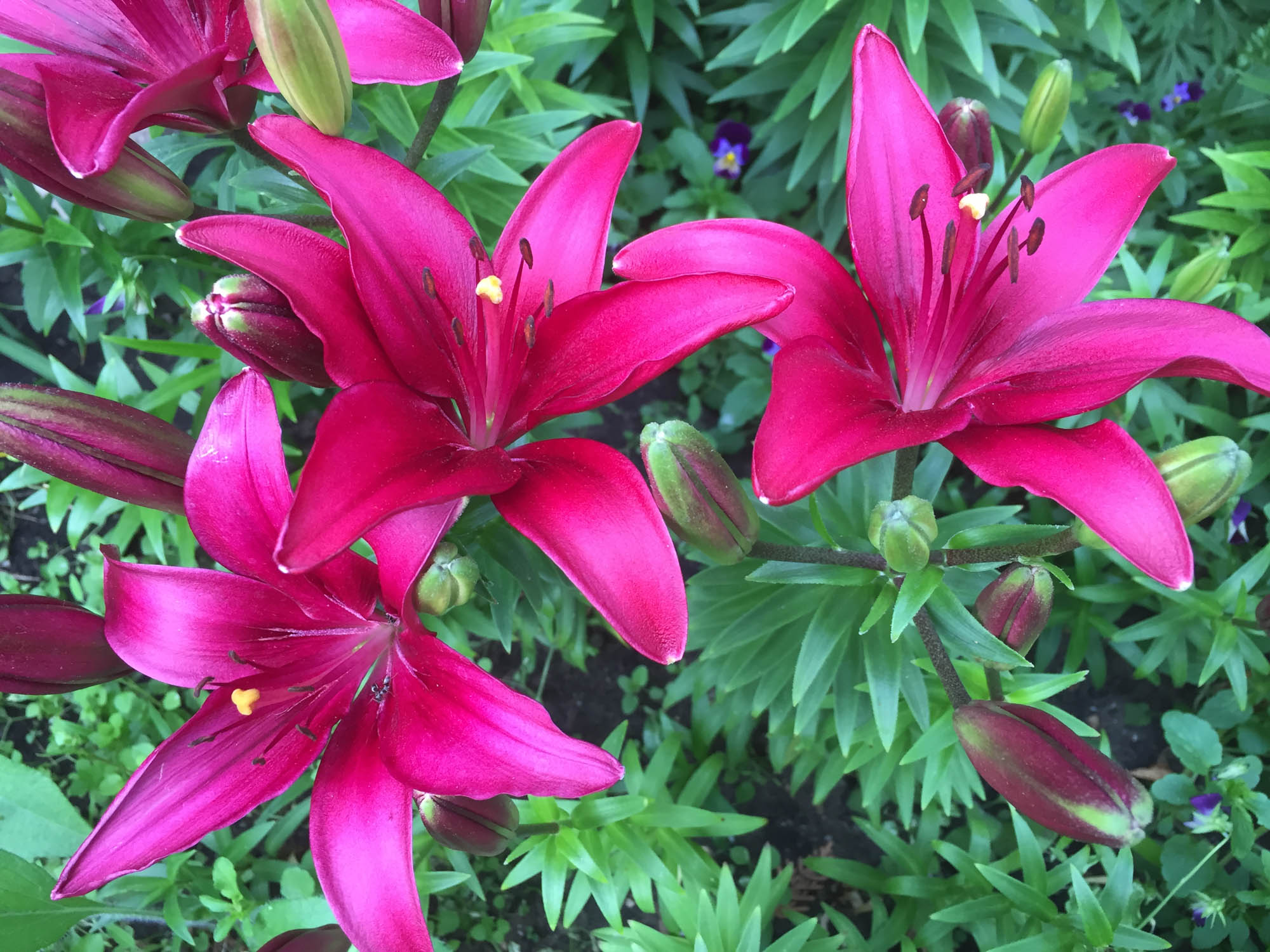
Poisonous houseplants
Some plants are best avoided if you have small children or pets
Some houseplants and cut flowers are toxic or poisonous to humans and/or animals. The severity of the symptoms can range from mild to life-threatening, depending on the toxin and the amount of exposure. If you have a curious child, cat or dog, it may be best to have only non-toxic plants.
It isn't unusual for a rash of social media posts warning people about strangers poisoning animals in their yards or dog parks. This is
Please note that this list captures the toxicity of most common plants we get questions about. It is not suitable for deciding if a plant is safe to use in all situations. For example, hot peppers and sea buckthorn may perfectly safe to consume but you would not want to plant them in a therapy garden in a
Interestingly, some plants thought to be poisonous are not. Poinsettia is one example; African violet is another. Here is a partial list of plants to watch for:
|
Common name(s) |
Botanic name |
Toxic parts |
|
Arrowhead plant, Nephthytis |
Syngonium podophyllum |
All parts |
|
Amaryllis |
Hippeastrum |
Bulb |
|
Angels' wings, Caladium, Elephant's ear |
Caladium |
All parts |
|
Azalea, Rhododendron, Rhodora, Rose Laurel, Rosebay |
Rhododendron spp. |
Leaves |
|
Bird-of-Paradise |
Poinciana gilliesii |
Fruit and seeds |
|
Bittersweet, Deadly nightshade, European bittersweet |
Solanum dulcamara |
All parts, especially berries |
|
Chrysanthemum, Daisy, Feverfew, Marguerite |
Chrysanthemum spp. |
Leaves, stems |
|
Croton |
Codiaeum variegatum |
All parts |
|
Crown of Thorns |
Euphorbia milii |
All parts |
|
Dumbcane |
Dieffenbachia spp. |
All parts, especially juices |
|
Foxglove |
Digitalis purpurea |
Leaves, seeds |
|
Holly |
Ilex |
Leaves, bark, berries |
|
Hyacinth |
Hyacinthus orientalis |
Leaves, juices, bulb |
|
Hydrangea |
Hydrangea sp. |
Bark, leaves, flower buds |
|
Ivy: English ivy, Needlepoint ivy, Ripple ivy, Common ivy |
Hedera spp. |
All parts |
|
Jerusalem cherry, Christmas cherry |
Solanum pseudocapsicum |
All parts, especially unripened fruit and leaves |
|
Lily |
|
All parts toxic to cats |
|
Lily-of-the-Valley |
Convallaria majalis |
All parts |
|
Mistletoe: American mistletoe, European mistletoe |
Phoradendron |
Leaves |
|
Narcissus |
Narcissus sp |
Bulb |
|
Philodendron, |
Philodendron spp. |
Leaves, juices |
|
Oleander |
Nerium oleander |
Leaves |
|
Pothos, Devils Ivy |
Scindapsus aureus |
All parts |
|
Umbrella Plant |
Cyperus alternifolius |
All parts |
For
What to do if you suspect poisoning:
- Seek immediate medical help or call the Saskatchewan Poison Control Centre at 1-866-454-1212. https://www.saskatchewan.ca/residents/health/emergency-medical-services/poison-control-center
- If you suspect your pet has been poisoned, contact your nearest veterinary clinic.
Sources:
https://www.aspca.org/pet-care/animal-poison-control/dogs-plant-list
http://www.cccf-fcsge.ca/wp-content/uploads/RS_29-e.pdf
https://lancaster.unl.edu/hort/factsheets/031_ToxicityHouseplants.pdf
https://www.aspca.org/pet-care/animal-poison-control/toxic-and-non-toxic-plants/alocasia

